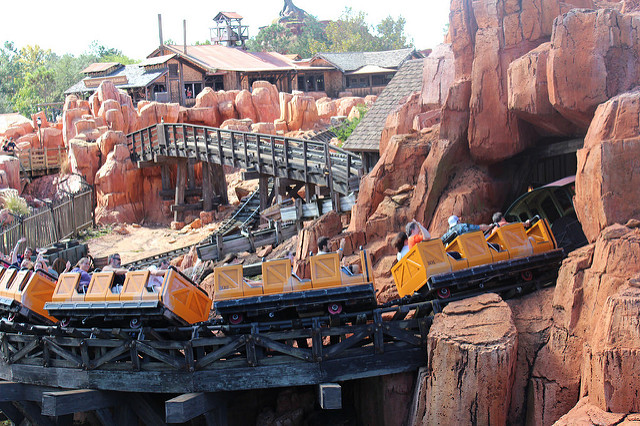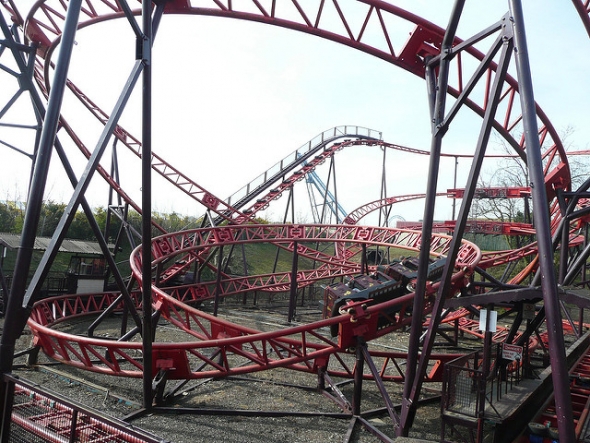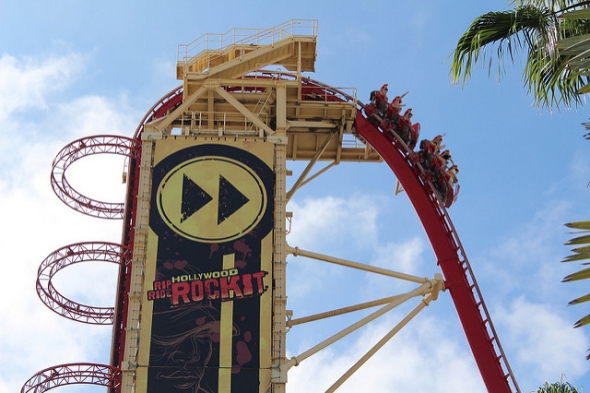The all-important adrenaline rush
Adrenaline is the first hormone to flood your body when you’re approaching a thrill. Adrenaline is produced in the adrenal glands. These glands convert tyrosine into dopamine. When the dopamine is oxygenated, it becomes noradrenaline which in turn converts into adrenaline.
The adrenaline increases your heart rate and respiration, inhibits insulin production and stimulates the body to synthesize sugar and fat so you’re essentially pumped up and ready to battle the danger or run away at lightning speed. Adrenaline will also intensify your feelings, heighten your senses, and even dim your sense of pain. All of this creates a more immersive and thrilling roller coaster experience.
Your brain on dopamine
Dopamine is another major player in the thrill experience. Dopamine is known as the “reward drug.” It gives you a rush of pleasure after a satisfying experience. Your neurons will begin firing faster as your brain produces dopamine and delivers it to various areas during that pleasurable afterglow stage when you’re stepping off the roller coaster and realizing you survived.
There are many different ways to trigger a dose of dopamine. Activities as innocent as food and exercise can give you some of the reward drug. Gambling, drugs, and other addictions can boost your dopamine levels as well. Thrill rides fall somewhere around the middle of the spectrum. While they’re not particularly hazardous, they’re also not an everyday experience like your morning jog.
A brain on dopamine is a happy brain, which is why thrill rides can be so satisfying. Even people who don’t enjoy the ride itself will often feel satisfied afterward because they get their dopamine dose from the sheer pleasure of getting through the experience and coming out the other side.
Why people do it again

There’s no question that some people are more “addicted” to roller coasters than others. Thrill seekers who go after the big rushes again and again may do so because their dopamine receptors function a bit differently. Recent research has shown that people who are known as “thrill seekers” are often less able to regulate dopamine levels in the brain. The dopamine neurons fire faster in these individuals and are not regulated as strictly. This gives them a bigger hit from each thrill, encouraging them to seek out these types of experiences more often.
Now that you have a better understanding of how thrills are produced, you can maximize your own experiences by making sure you take time to experience every step of the thrill process. From early anticipation to the final dopamine rush, there’s plenty to look forward to on thrill rides.


Add new comment